
John Cage and His String Quartet in Four Parts
March 1, 2015
John Cage once said, “I have nothing to say, and I’m saying it.”
I burst out laughing when I first read this. Just imagine Ludwig van Beethoven announcing to the world, “I have nothing to say,” in which case he might have put down his pen and paper and taken a walk in the woods, eyes uplifted, hands behind his back as he communed with his muse until he did have something to say.
And what about Cage’s most well-known work, “4 Minutes, 33 Seconds,” in which a pianist walks onto the stage, sits down at the piano, and closes the keyboard lid. And then after opening and closing the lid at various intervals, the pianist stands up after exactly four minutes, thirty-three seconds and takes a bow. Cage was pulling our collective leg, right?
Wrong. He was utterly serious.
John Cage simply thought about things differently than most people. In the case of “4 Minutes, 33 Seconds,” it was not silence, or the absence of sound that Cage was concerned with, but the ambient sounds heard by the audience—for example the rustling of leaves, a rainstorm, and the laughter of perplexed people—all heard during the work’s first performance.
For all his unorthodoxy, Cage did write a work for traditional string quartets in mid-career. Cage began his String Quartet in Four Parts in Paris in 1950 when he was thirty-eight years old. Beforehand, he told his parents that he wanted to compose a work that would praise silence without actually using it. Perhaps this was a foreshadowing of “4 Minutes, 33 Seconds.” Once underway with the quartet, his fascination with this new way of composing prompted a letter in which he wrote: “This piece is like the opening of another door; the possibilities implied are unlimited.”
The String Quartet in Four Parts is based partially on the Indian view of the seasons, in which the four seasons—spring, summer, autumn, and winter—are each associated with a particular force: creation, preservation, destruction, and quiescence.
Cage used a new technique of dealing with single pitches, intervals, or groups of sounds in this quartet, which he called gamuts: predefined sonorities that essentially released harmony from any purpose or progression in supporting the melody. He said that the inclusion of traditional harmonies was a matter of taste, from which a conscious control was absent. Cage chose randomness rather than meaningful sound as his goal. We can only wonder what the old masters would have thought of this concept. Cage’s stated aim was to “sober and quiet the mind, thus rendering it susceptible to divine influences” rather than music to express feelings and ideas.
The String Quartet in Four Parts creates a remarkable atmosphere that does indeed sober and quiet the mind. It seems to drift through time peacefully if randomly, the notes and harmonies endlessly connecting with one another—sometimes pleasantly, sometimes clashing—you might say in the same way that the sounds of civilization and nature also connect at random
Cage’s very early compositions in the twelve-tone method were clearly influenced by one of his teachers, Arnold Schoenberg, but he soon began experimenting increasingly with unorthodox instruments such as the “prepared piano,” a normal piano altered to produce percussive and uncommon effects.
After Cage had studied with Schoenberg for two years, Schoenberg said to him: “In order to write music, you must have a feel for harmony.” Cage explained to him that he had no feeling for harmony. Schoenberg then told Cage that without a sense of harmony he would always encounter an obstacle—it would be as though he came to a wall through which he could not pass. “In that case,” Cage told Schoenberg, “I will devote my life to beating my head against the wall.”
Years later, Schoenberg disparagingly referred to his one-time student Cage as an inventor rather than a composer. Cage simply loved this and often called himself just that: an inventor. As time went on, Cage’s works often became theatre as much as music; he composed for dance, wrote poetry, and the manuscripts of his music were sometimes exhibited as works of art. Cage embraced Zen Buddhism and other Eastern philosophies and was of the mind that everything in music must be part of a single natural process.
At one point, Cage became fascinated with mushrooms and acquired an extensive fungi collection. He said that “ideas are to be found in the same way that you find wild mushrooms in the forest, by just looking; you can’t just come upon them directly, they come to you as things hidden.”
Anyone playing through or listening to Cage’s groundbreaking String Quartet in Four Parts for the first time must wonder: Who actually was this John Cage? Was he a composer, an artist, an actor, a poet, a mystic, an inventor, a mycologist, or merely someone playfully pulling our leg?
Take your pick.

This post is a script excerpt from The World of the String Quartet, a seven program open online course that I will be co-hosting with Mia Chung. The programs will take you from the beginning of string quartet history to the present, and then make a dizzying but exciting leap into the future. The World of the String Quartet is produced by the Curtis Institute of Music and hosted by Coursera. Sign up for free, and listen and learn at your convenience from videos and additional resources—all you need is an Internet connection. We expect to launch the course in April 2015 and hope you will join our global community of music listeners and performers, as we explore the repertoire, history, and experience of string quartets. May the power of the string quartet be with you!
Subscribe
Sign up to receive new stories straight to your inbox!








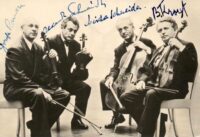
























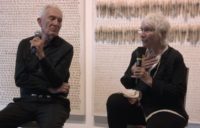


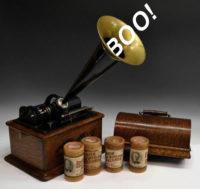




















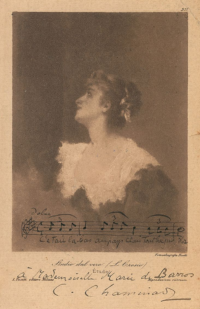




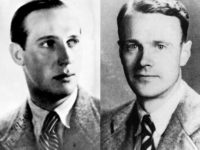






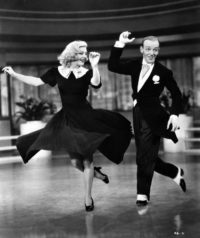







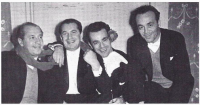
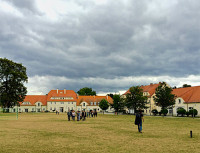


















































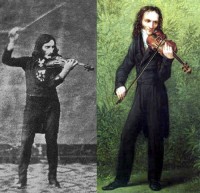



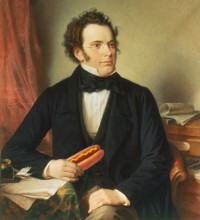

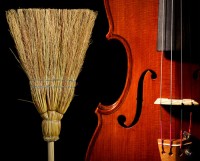





























Comments
So refreshing to read your appreciation of this 20th century “Master.” I had the honor of taking what I understand was the only class Cage. (Oh the irony of the fact that ‘BACH’ is a tone cluster, while ‘CAGE’ is perfectly tame first inversion of a minor 7 chord!) offered after his time at Black Mountain College in the 50s. It was 1968 at UC Davis and Cage was resident composer for the term, accepting 50 music and visual arts students in his ‘course’ – ‘John Cage 101.’
He had recently worked with Bucky Fuller and Bucky’s students to create a computer program that would operate randomly to create instantaneous ‘coin tosses’ of the ‘Yi Ching’ allowing us to organize into randomly selected discussion and working groups, discussing randomly selected books from the Cal Davis library, and creating music and art to present to the Great Man in randomly selected order at a randomly selected location on campus! We were also treated to a feast of wonderful wild mushrooms he had collected on the Mendocino coast.
All this, of course, could be wildly lampooned by all the nay Sayers. But there was no denying by we young students. It was clear to al. We were in the presence of one of the great spirits of the century. His incredibly precise way of speaking, the tming and rhythm of his out bursts of his joyous cackle, and his little ‘Hmmm?’ at the end of sentences – little invitations to discover the deeper meanings in his words and silences – were all music to our ears. And none of us will pass the sight of cows grazing on a hillside without remembering his appreciation of how lovely and artfully they display themselves. His insights will resonate across the centuries as surely as Bach and Beethoven…
Now I must go off and listen to that String Quartet!
Arnold, I found this fascinating. I am tempted to sign up for an education! Kyra
Leave a Comment
*/